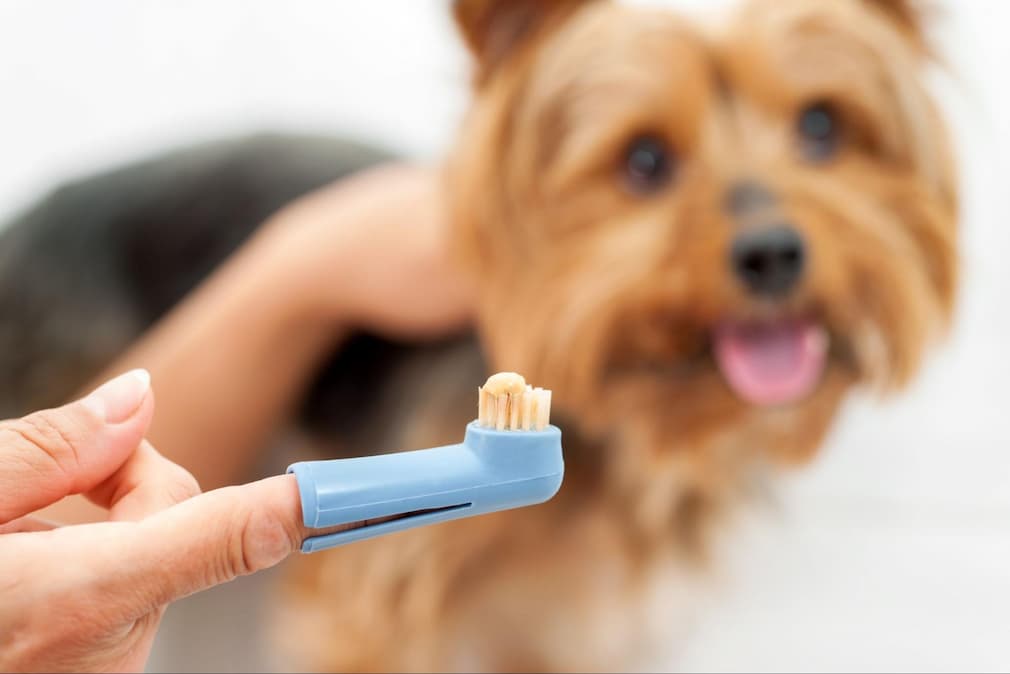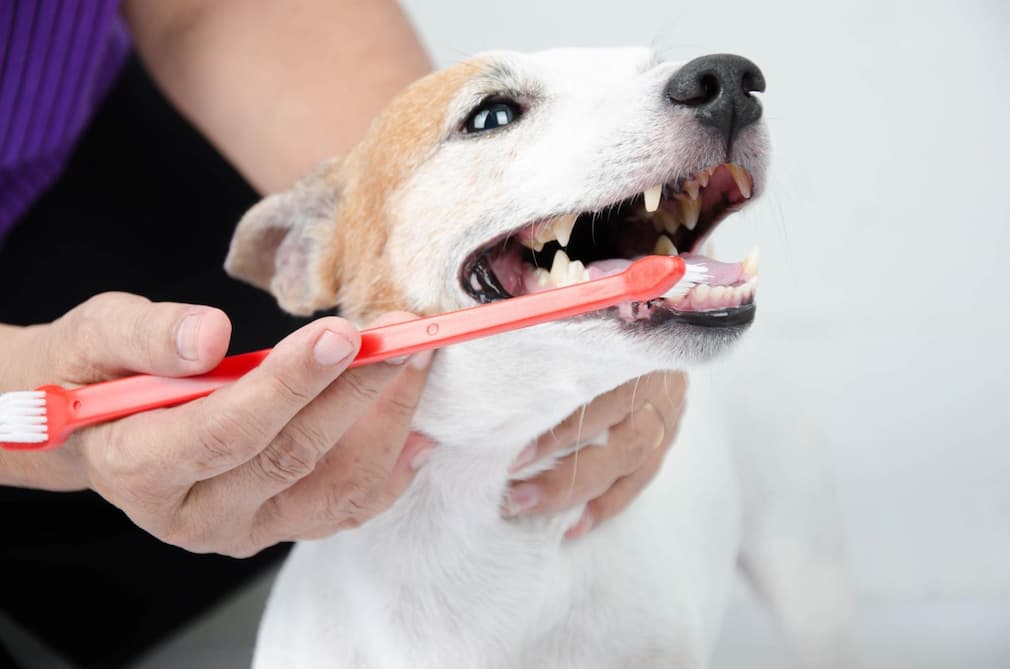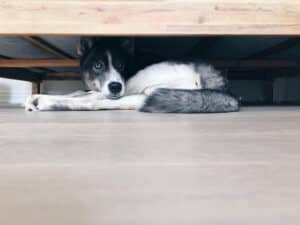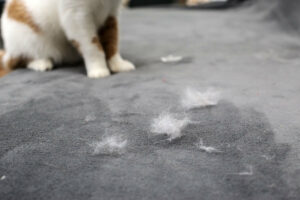You brush your teeth every day – at least, I hope you do. But you do so because you know good dental hygiene is vital to your health. And much like us, our dogs need their teeth regularly maintained to maintain their overall health. Giving your pup a dental chew or rawhide does not equate to proper dental hygiene, just as chewing a piece of gum does not pass as approved teeth cleaning by your dentist.
Why Is It Important to Brush Your Dog’s Teeth?
If a dog’s teeth are not regularly maintained, medical complications can arise that can become life-threatening. One of these is periodontal disease, which can affect 85% of dogs older than four. Periodontal disease is the build-up of plaque on the teeth, which can turn into tartar. Over time, if teeth brushing is not part of their daily routine, it can cause extreme pain, tooth decay, and even bacterial infections that can spread to vital organs in the body. This dangerous disease is not curable, but it is preventable with regular teeth brushing habits.
How Often Should You Brush Your Dog’s Teeth
It is a good idea to check your dog’s gums and teeth at least once weekly. Look for pink gums rather than white or red. And there should be no signs of swelling. The teeth should be clean, with no indication of brownish tartar. Plus, their breath shouldn’t smell bad. If you notice that your dog has inflamed red gums and bad breath, then they have gingivitis. The good news is this is treatable with regular teeth cleaning. If it’s left untreated, it will develop into periodontal disease.
What Tools Do You Need to Brush Your Dog’s Teeth?
All you need for the task of brushing your pet’s teeth is a toothbrush and dog-safe toothpaste. There are various types of toothbrushes for dogs, including traditional ones with longer handles and smaller bristle heads, as well as dental wipes and finger toothbrushes.
IMPORTANT: use a specifically designed toothpaste for dogs. DO NOT use human toothpaste as it is toxic.The artificial sweetener and fluoride is dangerous for dogs.
How to Introduce Tooth Brushing to Your Dog
Introducing a dog to teeth brushing can be daunting, but it is essential for their overall health and well-being. Start by getting your dog used to having their mouth touched, and gradually introduce a toothbrush with flavored toothpaste made specifically for dogs. Make the experience positive by rewarding them with treats or praise. It may take some patience and persistence, but with time and consistency, your dog will become comfortable with teeth brushing.
Step-By-Step Guide To Brushing Your Dog’s Teeth
Follow These Steps for Brushing Your Dog’s Teeth
- Choose a time that is calm in your home. The room should not be full of active children and other pets.
- Get your dog into a comfortable position where you can gently grab its muzzle. Place your fingers in your dog’s mouth for a few seconds every day, and massage the gums in a circular motion for 30 to 60 seconds once or twice a day for a couple of weeks. After each session, you can introduce some positive reinforcement with a treat or affection.
- Next, get them used to canine-friendly toothpaste. Put a small amount on your finger and gradually work it around the entire mouth, pretending you have a toothbrush.
- Next, get your dog used to a toothbrush designed for dogs. You can use a “cat-sized” brush if you have a small dog. Toothbrushes that you can wear over your finger are also an option. Wet the bristles and work it around in gentle circular motions and strokes from the gum line down.
- The important part is to make your dog used to a daily teeth brushing routine. Once they’re used to it, you can brush their teeth 2-3 times weekly. Although, daily is always best. It is also important to regularly follow up with a vet to ensure their teeth are in good health.
Tips for Making Tooth Brushing a Positive Experience for Your Dog
Brushing your dog’s teeth is essential for their overall health, but it can be a difficult task that many dogs resist. To make teeth brushing a positive experience for your furry friend, try some of these tips to make the important task a positive experience for your pet and yourself.
- Introduce the teeth brushing supplies gradually. Slowly introduce your dog to the toothbrush, toothpaste, and other supplies. Offer praise and reward to create a positive association with the objects.
- When first beginning teeth brushing, you can break up the routine into four quadrants throughout the day. In other words, focus on brushing one-fourth of the teeth at a time, and by bedtime, you will have the entire mouth cleaned.
- Instead of using a toothbrush the first couple of times, wrap a piece of gauze around your finger and apply the toothpaste to your wrapped finger.
- Once you’ve established teeth brushing, make it part of your dog’s daily routine. They will come to expect this as part of their day.
- Save your best treats for teeth brushing rewards! Pets can start liking the gum massage and attention they get during daily oral care, not to mention all the praise they receive.

The Do’s and Don’ts of Brushing Your Dog’s Teeth
DON’T Use Human Toothpaste
There is specially formulated toothpaste for dogs that, when swallowed, is not harmful. Human toothpaste contains high levels of fluoride and is dangerous.
DO Remain Calm & Start Gradually
Your dog can sense when you’re nervous, so keep calm and your pet will echo your action. Go slow. You may only get to some of the teeth at a time. Get them used to your finger on their teeth. Keep your movements slow as you work around the mouth.
DON’T Give Up
If your furry friend is not a fan of teeth brushing, don’t throw in the towel. Training your pet to become used to this critical hygiene ritual could take a few days or weeks, depending on your dog. Stay calm and try again at a different time.
Do Aim to Brush Daily
While it is recommended to brush your dog’s teeth every day, we understand that some pet parents have a busy lifestyle, so if you can try two to three times a week, that would be great. Remember that the more you brush, the healthier the mouth will be.
Other Dental Hygiene Options for Your Dog
Besides brushing, other dental aids can be used to maintain oral health – such as chew toys and oral water additives. Of course, these should never be a replacement for brushing their teeth, but rather extra help.
When to Consult a Veterinarian About Your Dog’s Dental Health
About once a year, it would be best to have your pet’s teeth checked by a veterinarian. Early detection of any issues is essential for keeping their mouth healthy. If you should notice any of the following problems, consult your pet care provider.
- Loose or broken teeth
- Baby teeth are not coming out
- Pain in or around the mouth
- Swelling around the mouth
- Bad breath
- Excessive or abnormal drooling
- Teeth covered in tartar
- Discolored teeth
- Dropping food from the mouth
- Refusing to eat
- Reduction in appetite
- Mouth is bleeding











